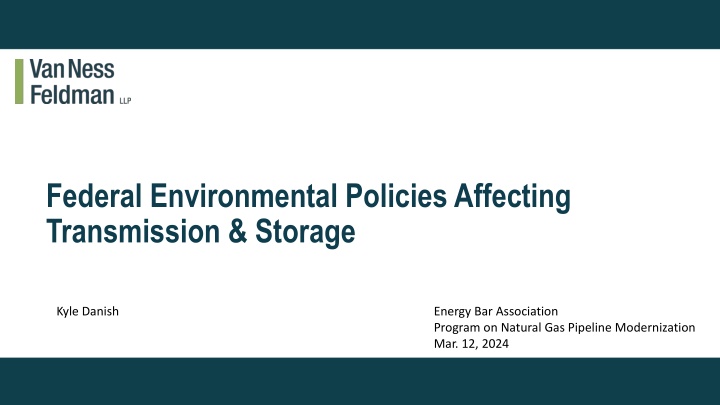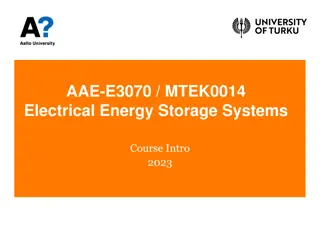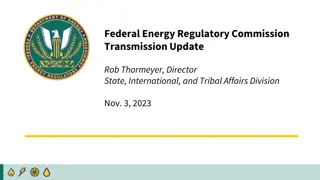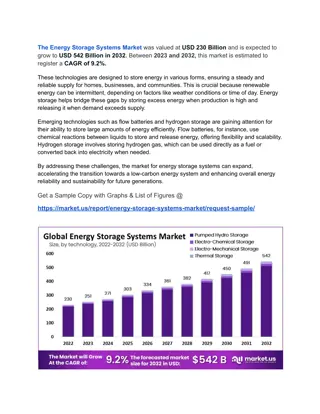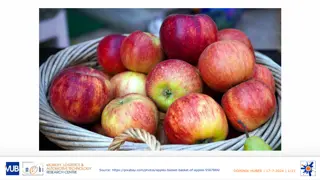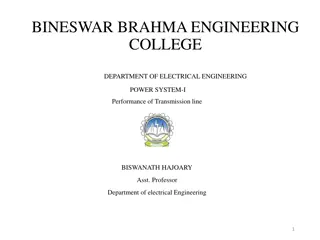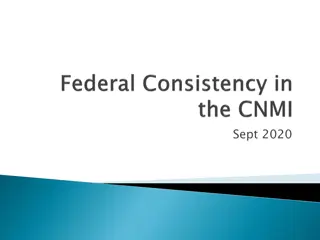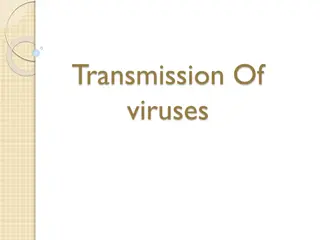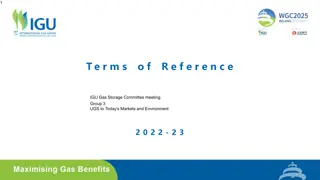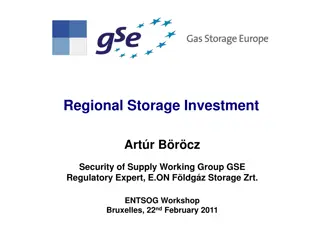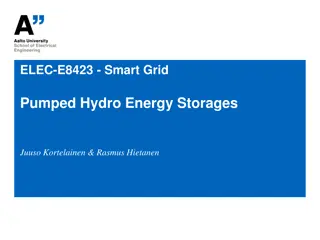Federal Environmental Policies Impacting Transmission & Storage in Energy Sector
Explore the key drivers and impacts of federal environmental policies like the Good Neighbor Rule and EPAs OOOO regulations on the transmission and storage aspects of the energy industry. Learn about compliance costs, deadlines, requirements, and implications for compressors, stations, pumps, controllers, and vessels.
Download Presentation

Please find below an Image/Link to download the presentation.
The content on the website is provided AS IS for your information and personal use only. It may not be sold, licensed, or shared on other websites without obtaining consent from the author.If you encounter any issues during the download, it is possible that the publisher has removed the file from their server.
You are allowed to download the files provided on this website for personal or commercial use, subject to the condition that they are used lawfully. All files are the property of their respective owners.
The content on the website is provided AS IS for your information and personal use only. It may not be sold, licensed, or shared on other websites without obtaining consent from the author.
E N D
Presentation Transcript
Federal Environmental Policies Affecting Transmission & Storage Kyle Danish Energy Bar Association Program on Natural Gas Pipeline Modernization Mar. 12, 2024
Key Drivers for Environmental Compliance Costs PHMSA regulations EPA s Good Neighbor Rule EPA s OOOO regulations Waste Emissions Charge 2
Good Neighbor Rule: State of Play Source: Clean Air Act requirement on all states to address ozone transport EPA disapproved 22 state plans Imposed federal plans Litigation morass In effect for 10 states Stayed in 12 states Emergency motion to stay entire rule under review in Sup. Ct. 3
Good Neighbor Rule: Impacts on Compressors May 1, 2026 compliance deadline for NOx standards Requires retrofits to gas-fired reciprocating engines 1000 hp INGAA estimates 1200 units affected Reliability risk Engines must be taken offline Cannot confine work to shoulder months Only 2 vendors 4
EPAs OOOO Regulations Affected sources in T&S segment Compressors stations Pneumatic pumps Pneumatic controllers Storage vessels Types of requirements Equipment replacement Process changes Leak detection and repair (LDAR) 5
OOOO Regulations: Timing Sources newly-built or modified after Dec. 6, 2022 May 2024 Sources existing prior to Dec. 6, 2022 Federal-state process State plans due: no later than May 2026 EPA approval process: in 2027 Compliance deadline under state plans: generally no later than May 2029 6
OOOO Regulations: Selected Requirements T&S Source Requirements Fugitive emissions at compressor stations Monthly AVO surveys and quarterly OGI surveys with deadlines for repairing detected leaks. Compressor stations Wet seal: 95% reduction in emissions Wet seal (self-contained or mechanical seal): volumetric flow rate may not > 3 scfm/seal Dry seal: volumetric flow rate may not > 10 scfm/seal Reciprocating: volumetric flow rate no more than 2 scfm/cylinder Process controllers (NG-driven) Zero emission rate Storage vessels with PTE of 20 tpy or more of methane 95% reduction in emissions 7
OOOO Regulations: Advanced Technologies Operators may use EPA-approved technologies in lieu of OGI Satellites Aerial surveys Continuous monitors Third party Super Emitter Program EPA-approved third parties using EPA-approved technologies Notify EPA of Super Emitter events 8
Waste Emissions Charge Added by the Inflation Reduction Act Implemented by EPA Effective in 2025 for 2024 emissions Applies to: Affected facilities Emissions in excess of statutory thresholds Interaction with OOOO regulations 9
Waste Emissions Charge: Affected Facilities Reporting in Subpart W of Greenhouse Gas Reporting Program T&S Segment Emit > 25,000 metric tons of CO2equivalent/yr Affected facilities For T&S facilities, charge applies to all reported tons of methane emissions in excess of 0.11% of gas sent to sale from or through facility $900/t in 2024 / $1200/t in 2025 / $1500/t in 2026 and thereafter Calculation of charge An owner of multiple facilities may offset higher-emitting applicable facilities with lower Netting 10
Waste Emissions Charge: Regulatory Exemption WEC applicable facility eligible for exemption if: OOOO regulations are approved and in effect in all states with WEC applicable facilities (projected 2027) All equipment/components at the facility are in compliance with the OOOO regulations 11
Key Takeaways Methane mitigation requirements are coming for the T&S segment The requirements will reach new and existing facilities The requirements vary in form and stringency The requirements create incentives for advanced methane monitoring and measurement technologies 12
For more information: Kyle Danish 202-361-5621 kwd@vnf.com @kyledanish 13
